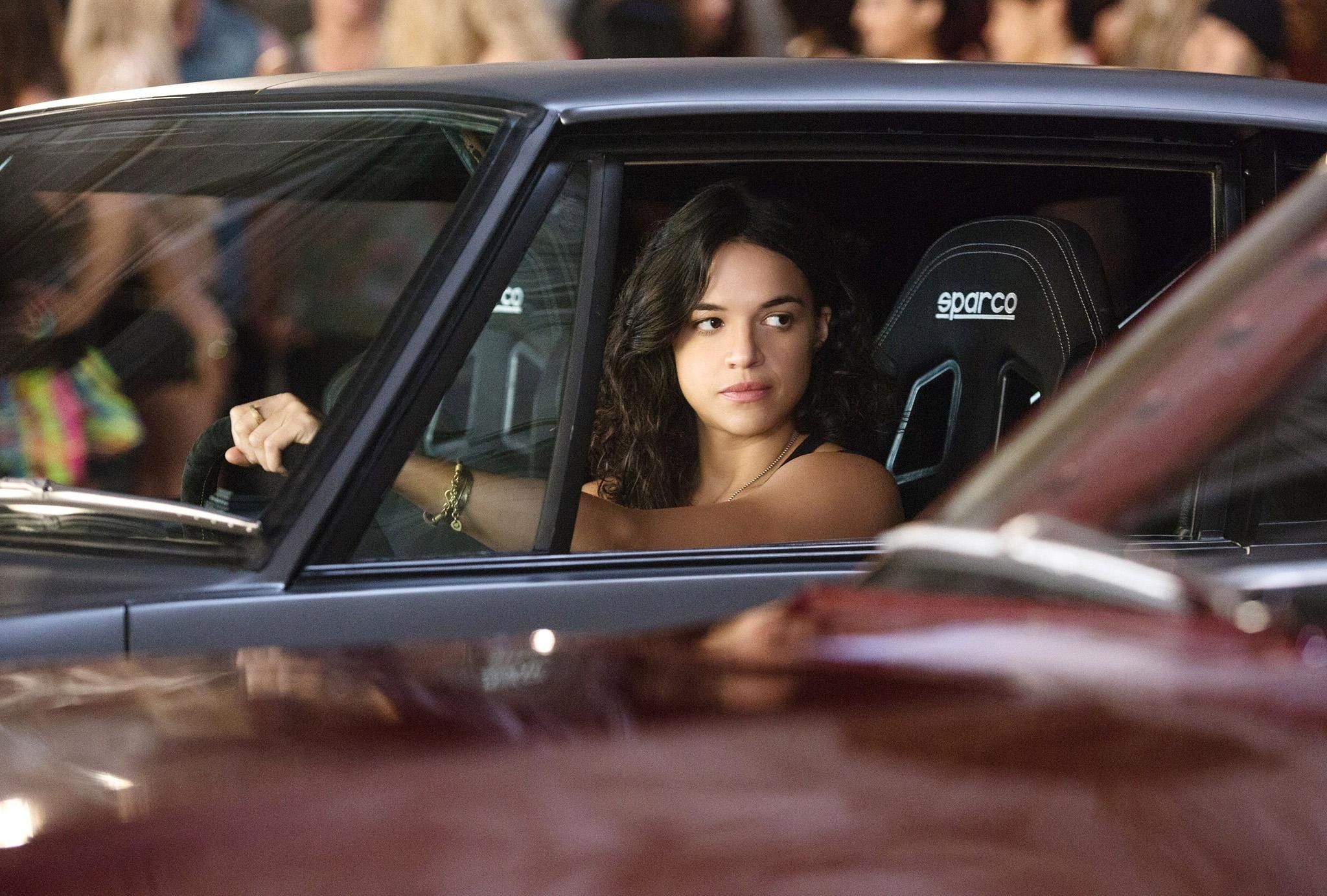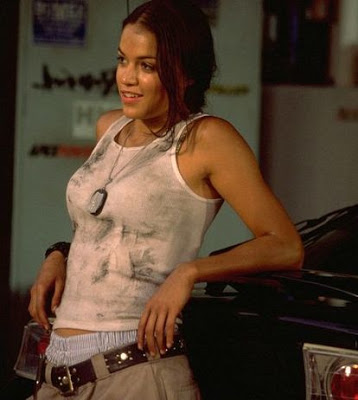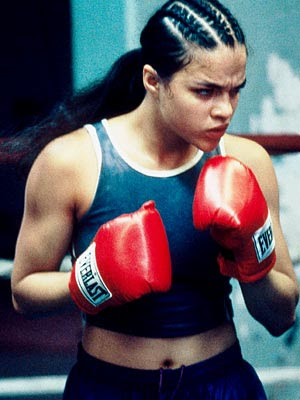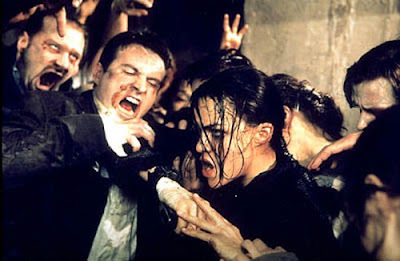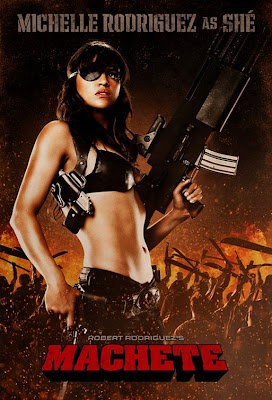This is a guest post written by Chelsy Ranard.
From Imperator Furiosa to Letty Ortiz, strong and knowledgeable female characters crop up in car movies. The women who used to be relegated to flag girls and objectified as hood ornaments are now being introduced as main characters with their own plot points and story developments. Women have notoriously had a minimal past in the automotive industry (and sadly, women are still underrepresented) and their history in automotive movies is no different. However, much like the evolution of women in film in general, women are evolving from props to leading characters in recent years.
Flag Girls and Hood Ornaments
The stereotypical woman in a car movie has been the woman in tall heels and a short skirt waving the start flag before a race. She’s been the beautiful woman in a bikini lying on top of a hood, washing the car, or standing next to the car in some sort of way.
These women don’t have names, any character development, and tend to be nothing more than gorgeous props, similar to the cars themselves in each scene. Car movies tend to be marketed towards men, so naturally there tend to be beautiful women next to beautiful cars. Even in some movies that portray strong women who know cars and drive them, a few flag girls still remain, but this used to be the only role available for women in car movies — unless you were a love interest; then at least you had a name.
Sexism has been an issue in Hollywood in general, not just movies in the car or action genre. Men are paid more and given more leading roles than women and this continues to be a pervasive issue. Women tend to be props in car movies, but they do in movies in other genres as well. This is an issue evolving and changing, however, and an exceeding amount of actresses speak out against sexism and the gender disparity in Hollywood and are working to change it. Women are still unequal to their male co-stars, especially in male-dominated genres, but the evolution is at an upward slope in car movies and in film and television in general.
Sexualized Characters
The women portrayed in car movies are almost always sexualized; the hyper-sexualized characters are almost always the flag girl type. But even the women taking their roles from props to supporting characters still remain highly sexualized and objectified. Think Megan Fox’s character in Transformers, or Jessica Simpson as Daisy Duke in The Dukes of Hazzard movie. These women are car women, not just flag girls or love interests, and are supporting characters. However, Fox’s character still bends over an engine in a crop-top while tightening a cap and Simpson’s character tricks men with her bikini-clad body.
While car movies now mix together more prominent women full of character development and car knowledge, these women are still sexualized. This is definitely not just a woman problem as Hollywood demands that all their stars be beautiful and men are not strangers to shirtless scenes. But men have a wider range of roles portrayed, as well as more lead roles and speaking lines and women are sexualized and objectified, often for the Male Gaze — in film, television and other media — far more than men.

Strong Female Characters
Fortunately, the role of the strong woman in car movies is not a myth and many movies are beginning to add more complex, intelligent, resilient female characters with agency. While some female characters are still sexualized and some aren’t main characters, the more films that feature strong women, the more upward momentum we see on-screen. Characters mentioned before like Letty, played by Michelle Rodriguez in The Fast and the Furious franchise, or Imperator Furiosa, played by Charlize Theron in Mad Max: Fury Road, are two examples of amazing female characters in car movies who don’t exist as props, who aren’t overly sexualized, and who possess character and story developments.
Some other strong female characters in car movies include Thelma (Geena Davis) and Louise (Susan Sarandon) in Thelma & Louise, Stella (Charlize Theron) in The Italian Job, Mona Lisa Vito (Marisa Tomei) in My Cousin Vinny, and Sway (Angelina Jolie) in Gone in 60 Seconds. Some of these movies walk the line for what is considered a “car movie,” but all of these women drive and represent the strong female characters our car movies need; although we could do with even less sexualization.
Movies That are Breaking Through
The Fast and the Furious franchise is the highest-grossing car movie franchise and has created seven movies so far, all of which feature women in main roles; but all of them also feature flag girls as well. However, the story created for one of the main characters, Letty, in such a big car movie franchise makes it one of the movies causing change as they try to break through the norm. Letty, whose story and character development undergo major plot points throughout the movies, is not sexualized in the way that Fox’s or Simpson’s characters are in their roles. She’s also featured in one of the largest car stunt scenes in film, a feat that not many women in car movies have been able to achieve.
Even in movies like Star Wars: The Force Awakens, the main character is a woman and an amazing pilot. Katniss in The Hunger Games trilogy, Hermione in the Harry Potter series, and Tris in the Divergent series are all strong female leads for whom younger generations can identify. They are all leads or co-leads in their movies; brave, intelligent, and strong who show that women are not just love interests in action-filled franchises.
In such a male-dominated genre, the women who appear in car movies stick out like a sore thumb. With each woman we see on-screen in these movies who exists as more than just a flag girl, who has a name, who isn’t just a love interest, and isn’t sexualized — it’s a huge win for women in car films, and women in general. Reaching equality is about making small changes until they build up into big changes, and each win gets women closer to being represented equally among men. In a genre that used to be all Burt Reynolds and Steve McQueen, it’s nice to see women like Michelle Rodriguez and Charlize Theron become common names in the car genre as well.
Chelsy Ranard is a writer from Montana who is now living in Boise, Idaho. She graduated with her journalism degree from the University of Montana in 2012. She is a passionate feminist, loves listening to talk radio, and prefers her coffee cold. Follow her on Twitter at @Chelsy5.
